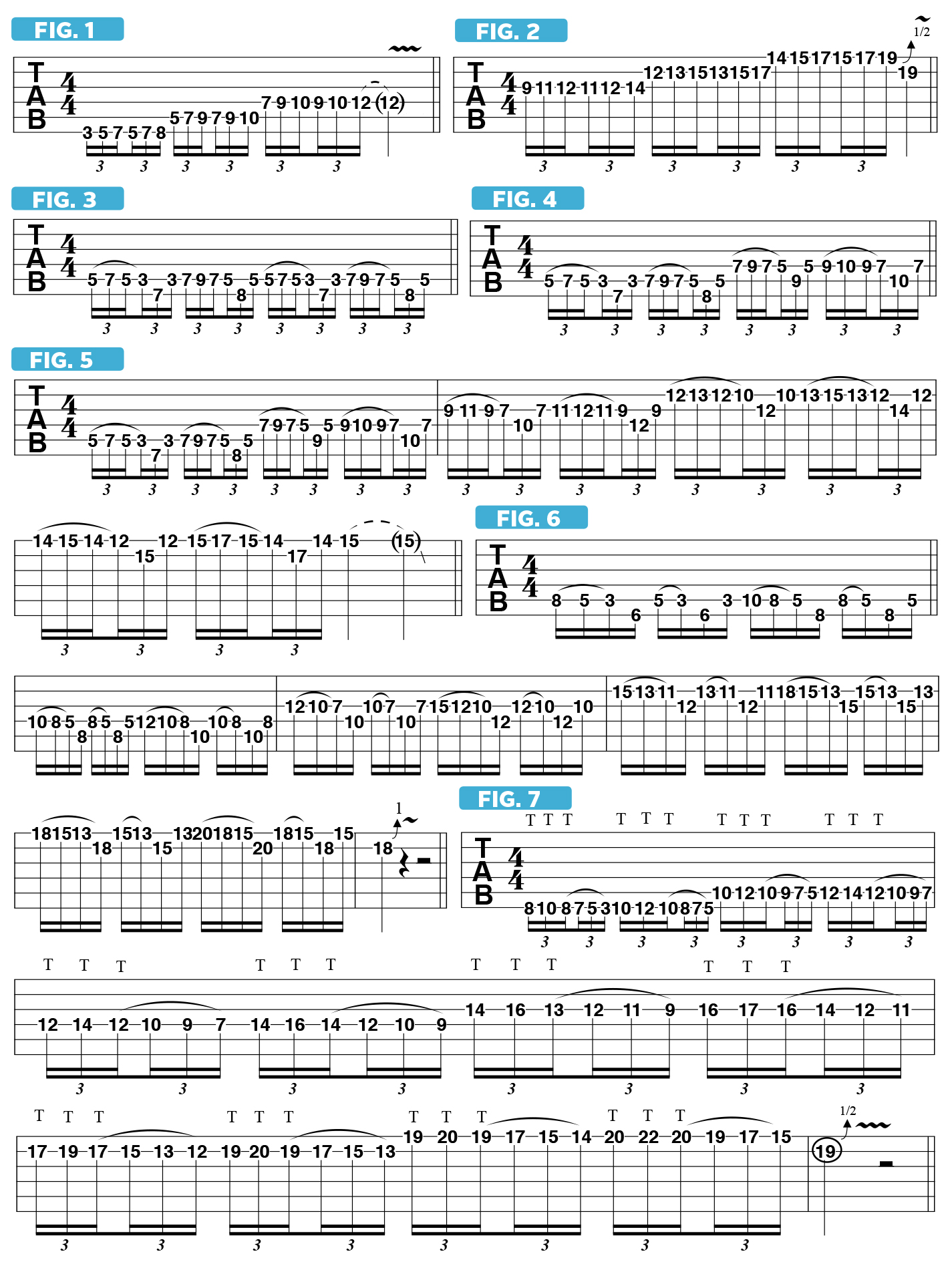Skipping Scale Steps on an Ascending Run
Skipping certain scale steps can lead to more engaging, less predictable ascending runs.
I was doing some transcribing recently and came across a lick that ascended the G major scale in a unique manner: specific notes were omitted in the pattern, which resulted in a faster and less predictable ascent. That got me to thinking about applying this concept to other licks and phrases of my own design.
FIGURE 1 illustrates this concept: based on the G major scale (G A B C D E F#), I begin on the sixth string in third position by playing the first three notes of the scale, G A B, and then play another sequence of three notes starting from the second note in the previous pattern, A B C, moving my index finger up to fifth position. Instead of then continuing with the same formula, I simply move over to the next higher string, the fifth string, while remaining in fifth position, which results in the notes D E F#; this is then followed with a sequence that begin on the second note of the previous pattern, E F# G, and a shift up to seventh position. The idea then follows its natural progression with a jump over to the fourth string while remaining in seventh position.
In FIGURE 2, I begin in ninth position on the third string and play E F# G, followed by a shift up to 11th position with the notes F# G A. When I move to the next higher string, the second string, I have to shift up one fret to 12th position to play B C D and C D E; likewise, when I move over to the first string, I again shift up one fret to 14th position to play F# G A and G A B.

Envisioning the G major scale divided on the fretboard in this way inspired me to find other phrases and patterns built in a similar manner. In FIGURE 3, I begin with my middle finger on D, fifth string/fifth fret, and hammer up to E with the pinkie and then perform a double pull-off down to D and C. The last two notes of the 16th-note triplet are B, sixth string, seventh fret, and C, fifth string, third fret. On beat two, I move up to two frets and play the same sequence starting from E, on the fifth string’s seventh fret. Try cycling these two licks back and forth in order to build up speed and precision.
Now let’s use these shapes while moving across to the higher strings: in FIGURE 4, I begin on the fifth string with the pattern shown in FIGURE 3 and then apply the idea to the fourth string, staying diatonic to the G major scale. FIGURE 5 takes this concept to its fruition by continuing to ascend across all of the strings.
A favorite technique of mine is to apply scalar patterns like these to minor pentatonic, as shown in FIGURES 6 and 7. FIGURE 6 is played in straight 16th notes and, as you will discover, requires a wide fret-hand stretch. FIGURE 7 elaborates on the idea with double tap-pull-offs. Using my pick hand’s index and middle fingers to tap, I begin each beat “index-middle-index,” followed by a double pull-off with my fret hand. The sequence then moves up in the same manner as introduced in FIGURE 1.
New York CIty guitarist Joel Hoekstra plays for Whitesnake, the Trans-Siberian Orchestra, Cher and his own side project, Joel Hoekstra’s 13, whose latest release is Dying to Live. Find out more at joelhoekstra.com.
All the latest guitar news, interviews, lessons, reviews, deals and more, direct to your inbox!
